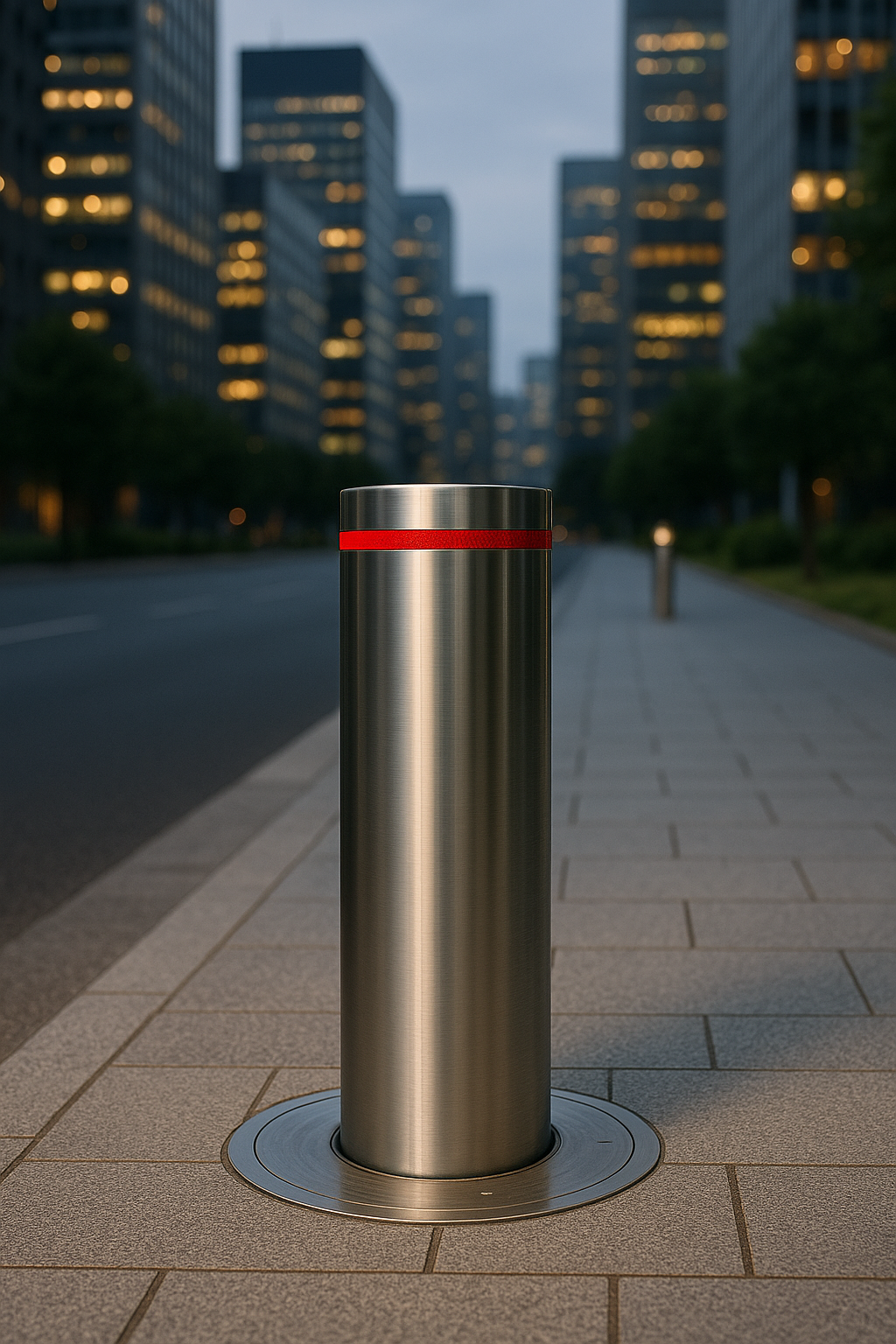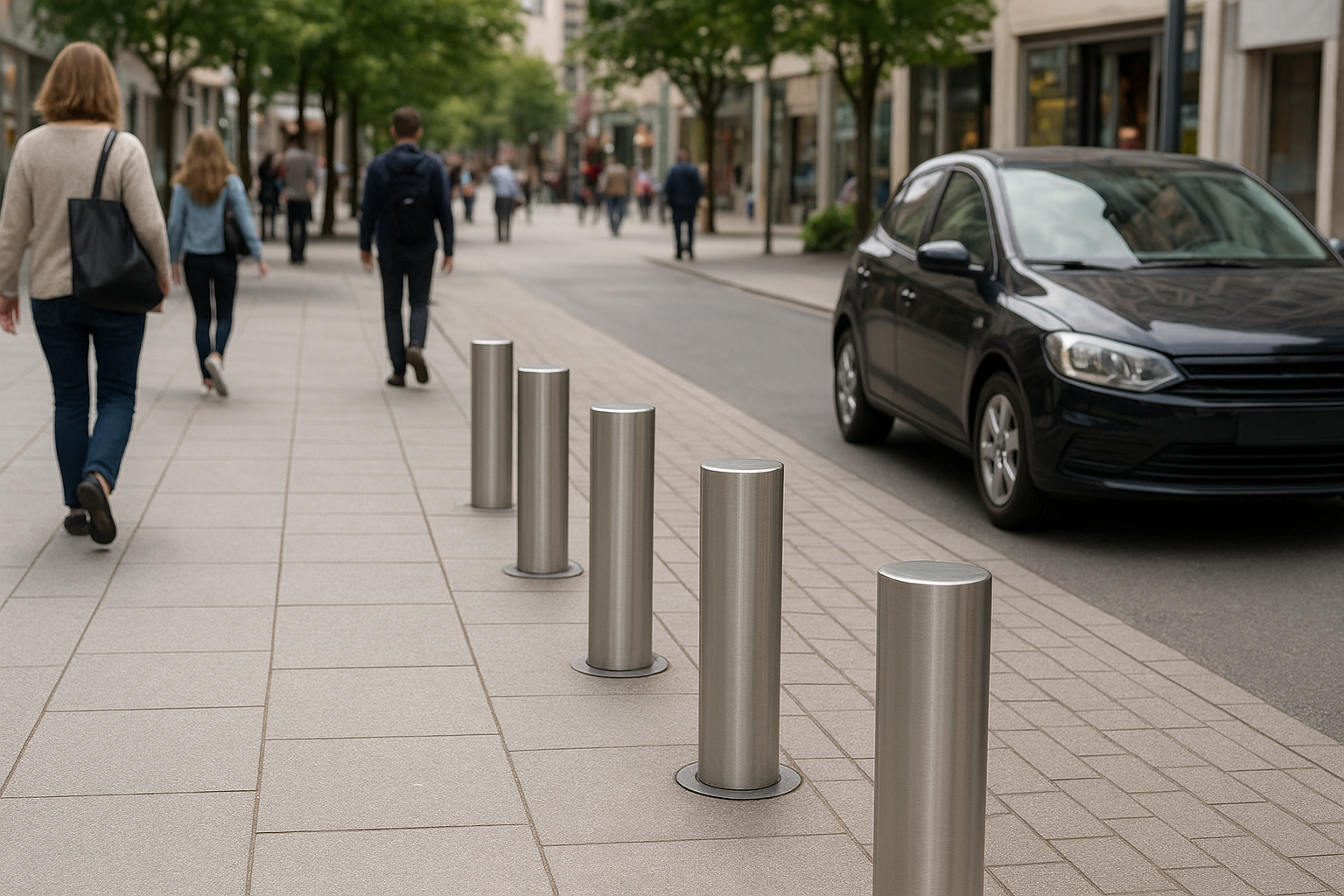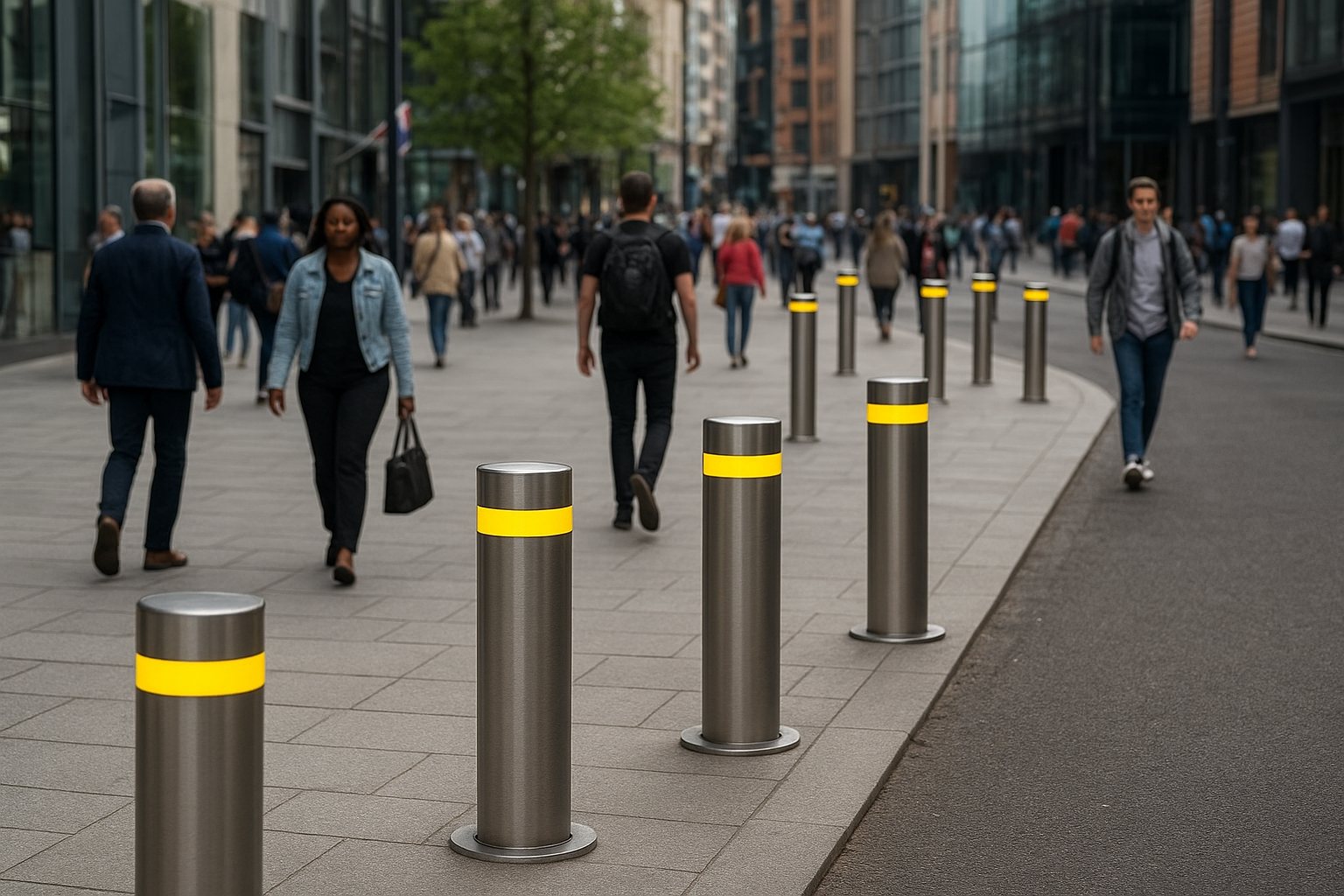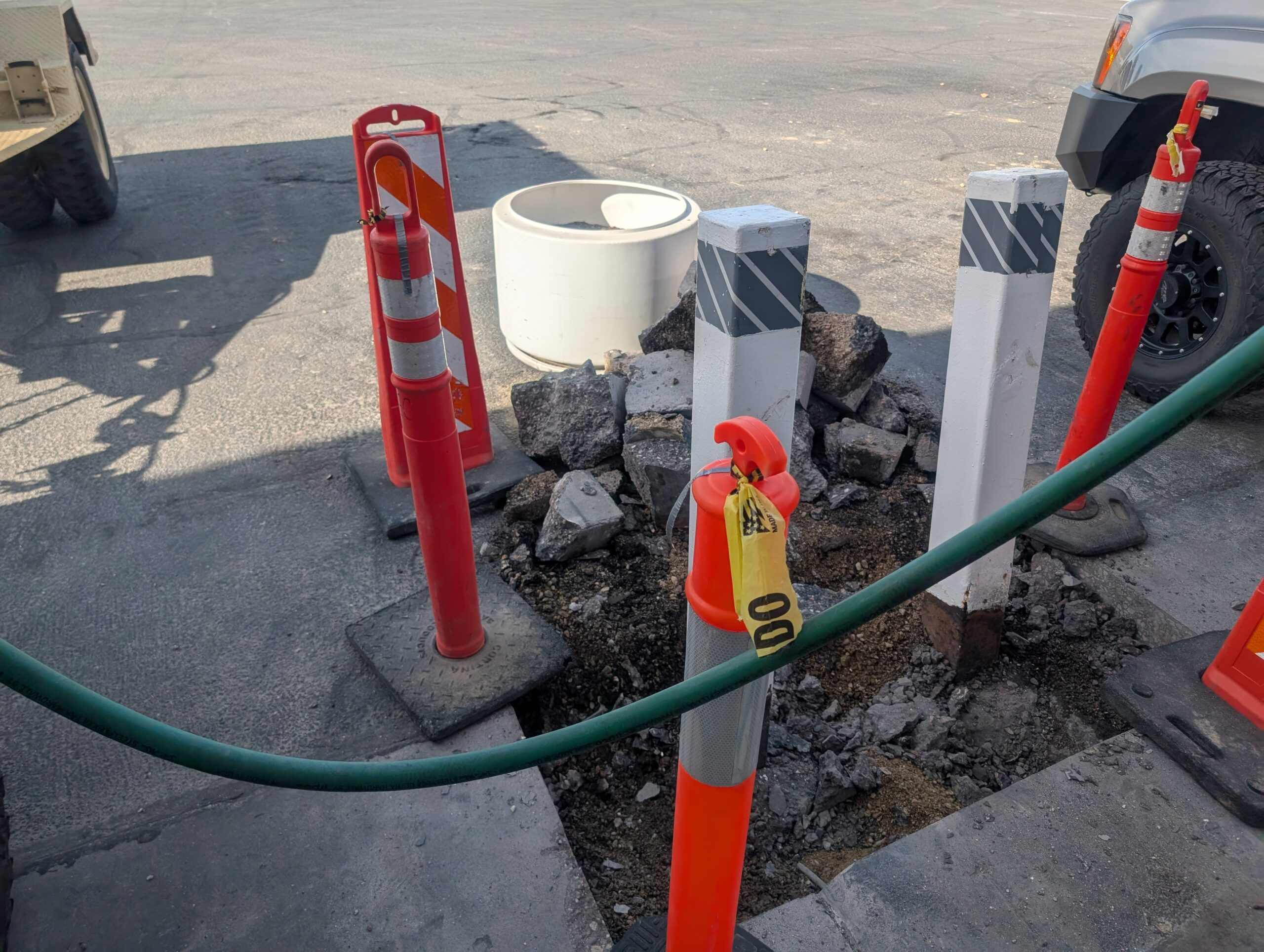As technology evolves, pneumatic bollards will continue to protect and enhance our urban landscapes.
The History of Pneumatic Bollards: From Industrial Innovation to Modern Security
Introduction
Pneumatic bollards, which use compressed air to raise and lower sturdy posts, represent a significant advancement in urban security and traffic management. Unlike traditional fixed bollards, these retractable barriers offer flexible access control, making them ideal for securing public and private spaces while allowing authorized vehicle passage. Rooted in the broader history of pneumatics and bollard evolution, pneumatic bollards have become essential in modern cities, balancing functionality, safety, and aesthetics. This article traces their history, from the origins of pneumatic technology to their contemporary role in urban design and security, with a focus on key milestones and applications.
The Roots of Pneumatic Technology: Ancient to Industrial Era
The foundation of pneumatic bollards lies in the development of pneumatic technology, which uses compressed air to transmit power. The concept dates back to the 1st century AD, when Greek mathematician Hero of Alexandria described using air pressure to power simple machines, such as wind-driven mechanisms. However, practical applications emerged much later. In the 17th century, German physicist Otto von Guericke invented the vacuum pump, demonstrating air pressure’s potential for mechanical work, laying the groundwork for modern pneumatics.
The 19th century was pivotal for pneumatics, with innovations that indirectly influenced pneumatic bollards:
1829: The compound air compressor, using multiple cylinders to compress air, was patented, improving efficiency.
1871: Samuel Ingersoll invented the pneumatic drill, showcasing air pressure’s ability to drive powerful mechanisms.
1872: Water-jacketed cylinders enhanced compressor cooling, making pneumatic systems more reliable.
1890: Charles Brady King developed the pneumatic hammer, further proving the technology’s versatility in industrial applications.
These advancements established pneumatics as a reliable power source, setting the stage for its use in dynamic urban infrastructure like bollards.
Early Bollards and the Shift to Urban Applications
Bollards themselves originated in the 17th and 18th centuries as maritime mooring posts, often made from wood or repurposed cannons. By the 18th century, they transitioned to urban settings to manage horse-drawn carriage traffic and protect pedestrians. The 19th century saw cast-iron bollards become widespread during the Industrial Revolution, offering durability for growing urban traffic. However, these early bollards were static, lacking the flexibility needed for modern access control.
The idea of movable bollards emerged in the late 19th century, inspired by industrial innovations. While hydraulic systems were initially more common for heavy machinery, pneumatic technology’s simplicity and lower maintenance made it a promising candidate for dynamic barriers. The use of pneumatics in other urban systems, like Alfred Beach’s 1870 pneumatic subway in New York, demonstrated air pressure’s potential for controlled movement, hinting at future applications in bollard design.
Emergence of Pneumatic Bollards: Late 20th Century
Pneumatic bollards specifically appeared in the late 20th century, driven by the need for flexible, secure barriers in urban environments. The 1970s and 1980s saw increased demand for access control in pedestrian zones, government facilities, and private properties, spurred by rising vehicle-related threats and urban congestion. Pneumatic systems, using compressed air to raise and lower bollards, offered a cost-effective alternative to hydraulic systems, which required more maintenance due to hydraulic oil.
By the 1980s, early pneumatic bollards were deployed in Europe, particularly in cities like London and Amsterdam, where pedestrianization projects required barriers that could retract for emergency or delivery access. These bollards typically consisted of a stainless steel or cast-iron cylinder with an internal pneumatic piston, controlled by an air compressor. A key innovation was the semi-automatic pneumatic bollard, introduced in the late 1980s, which used a manual key to adjust air pressure, allowing the bollard to rise or lower without complex electronics. This design was simple, reliable, and ideal for areas with limited power infrastructure.
Advancements in Design and Applications: 1990s to 2000s
The 1990s marked significant improvements in pneumatic bollard technology. Manufacturers refined the internal mechanisms, using nested outer and inner cylinders with gas springs to ensure smooth, rapid operation. Unlike hydraulic bollards, which relied on fluid dynamics, pneumatic bollards used compressed air, reducing maintenance costs and environmental risks from leaks. Their waterproof, sealed designs made them suitable for harsh environments, such as coastal areas or flood-prone cities.
Applications expanded during this period:
Government Facilities: Pneumatic bollards secured entrances to state agencies, preventing unauthorized vehicle entry while allowing emergency access.
Pedestrian Streets: Cities like Barcelona installed retractable pneumatic bollards at street intersections, lowering them for emergencies or special events.
Multi-Use Spaces: Squares and plazas used pneumatic bollards to block vehicles during the day and allow parking at night, as seen in some European cities by the late 1990s.
In the 2000s, pneumatic bollards gained traction for security applications. The rise of vehicle-ramming attacks prompted the development of crash-rated pneumatic bollards, capable of withstanding impacts from heavy vehicles. For example, in 2005, pneumatic bollards were installed around sensitive sites in London, combining retractability with anti-terrorism strength. Their 10mm-thick stainless steel bases, often cast with cement, enhanced impact resistance, making them a cost-effective security solution.
Modern Pneumatic Bollards: 2010s to Present
Since the 2010s, pneumatic bollards have evolved into sophisticated, eco-friendly, and user-friendly systems. Key advancements include:
Improved Impact Resistance: Modern designs incorporate thicker stainless steel and reinforced bases, meeting standards like PAS 68 for crash resistance.
Environmental Benefits: Unlike hydraulic systems, pneumatic bollards use compressed air, eliminating fluid-related pollution. If a gas line leaks, repairs are simple and non-polluting, as seen in Bollard Brothers’ “EcoGuard” series launched in 2023.
Ease of Installation: Pneumatic bollards require minimal external power systems, with air compressors often housed in separate control boxes. Installation involves digging a shallow pit (e.g., 60cm deep), making them faster to deploy than hydraulic alternatives.
Smart Integration: By 2025, some pneumatic bollards, like those from Bollard Brothers, feature IoT sensors to monitor traffic or security threats, integrating with smart city systems.
Today, pneumatic bollards are used globally in diverse settings:
Residential Areas: They restrict vehicle access while ensuring fire escape routes remain usable.
Commercial Spaces: Banks and retail stores use them to prevent ram-raiding, with quick-rise mechanisms for high-security needs.
Public Parks and Squares: Retractable pneumatic bollards allow pedestrian access during the day and vehicle entry for maintenance at night.
A 2024 case study in Melbourne showed pneumatic bollards reducing unauthorized vehicle entries by 90% in pedestrian zones, with no maintenance-related downtime over two years, highlighting their reliability.
Timeline of Pneumatic Bollard History
Period/Date | Event/Development | Materials/Technology | Impact |
|---|---|---|---|
1st Century AD | Hero of Alexandria uses air pressure for basic machines. | N/A | Foundation for pneumatic principles. |
17th Century | Otto von Guericke invents the vacuum pump. | Air pressure systems | Established pneumatics as a mechanical power source. |
1829 | Compound air compressor patented. | Multi-cylinder systems | Improved efficiency for pneumatic applications. |
1870 | Alfred Beach’s pneumatic subway demonstrates air-powered movement. | Pneumatic tubes | Inspired dynamic urban infrastructure. |
Late 1980s | First semi-automatic pneumatic bollards introduced in Europe. | Stainless steel, gas springs | Enabled flexible access control in pedestrian zones. |
1990s | Refinement of pneumatic mechanisms; waterproof designs. | Nested cylinders, air compressors | Expanded use in coastal and high-traffic areas. |
2000s | Crash-rated pneumatic bollards developed for security. | Reinforced steel, cement bases | Addressed vehicle-ramming threats in urban settings. |
2010s | Eco-friendly and smart pneumatic bollards emerge. | Bio-polymers, IoT sensors | Reduced environmental impact, integrated with smart cities. |
2023-2025 | Bollard Brothers’ “EcoGuard” series and IoT-enabled bollards launched. | Stainless steel, AI sensors | Enhanced security, 90% reduction in unauthorized entries. |
Challenges and Future Directions
Pneumatic bollards face challenges, including higher upfront costs compared to fixed bollards (approximately $3,000-$8,000 per unit) and the need for periodic air compressor maintenance. However, their lower maintenance costs compared to hydraulic systems and eco-friendly operation make them cost-competitive over time. In harsh climates, extreme cold can affect air pressure, requiring insulated designs.
Looking ahead, pneumatic bollards are poised for further innovation. By 2030, experts predict 50% of urban bollards will incorporate smart features, with pneumatic systems leading due to their simplicity and reliability. Advances in lightweight composites and solar-powered compressors could further reduce costs and environmental impact, aligning with global sustainability goals.
Conclusion
From the ancient principles of pneumatics to their modern application in retractable bollards, pneumatic bollards have transformed urban safety and access control. Their ability to balance security, flexibility, and environmental benefits makes them indispensable in cities and private properties. As technology evolves, pneumatic bollards will continue to protect and enhance our urban landscapes. Ready to secure your space with cutting-edge pneumatic bollards? Contact Bollard Brothers for a free consultation on our innovative, reliable solutions.









